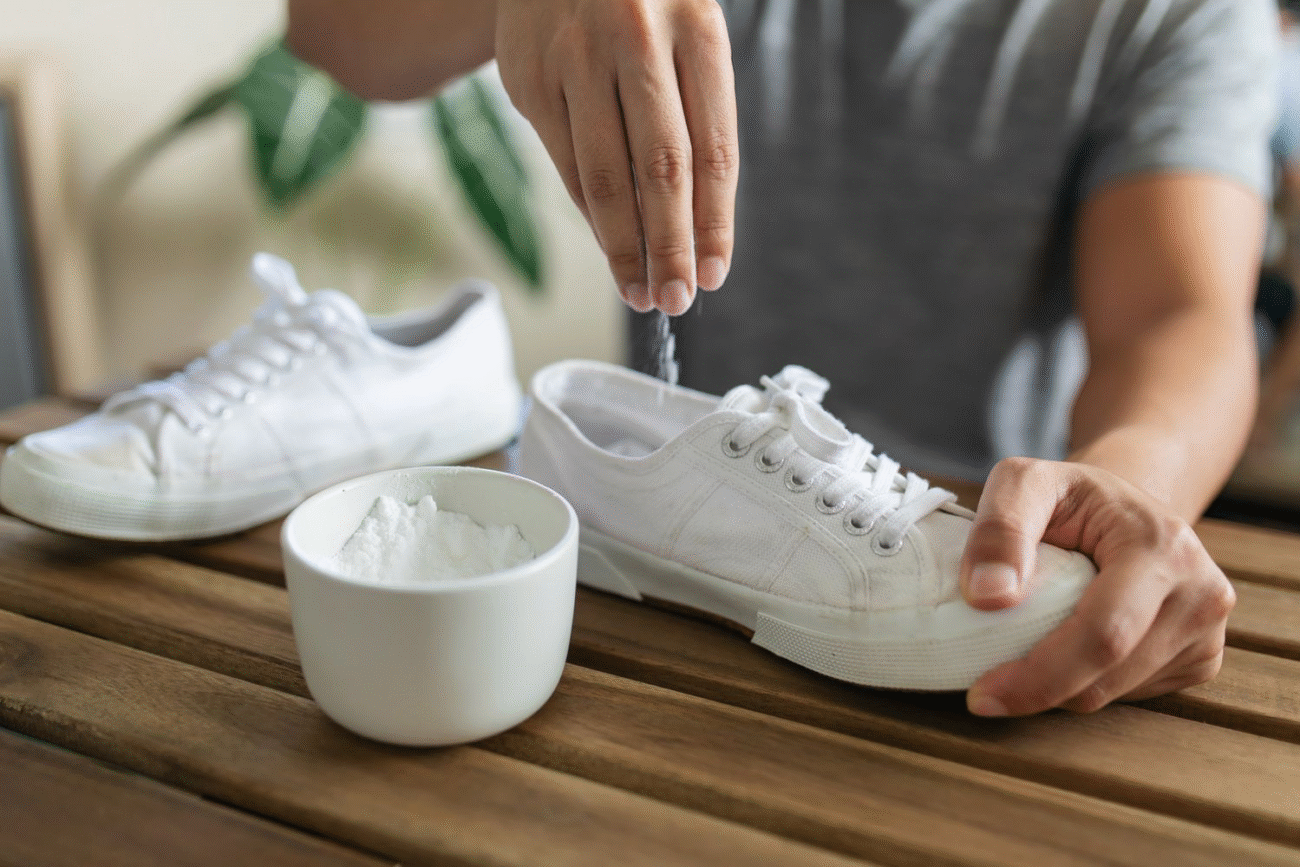Smelly shoes can be a big problem. They are embarrassing, and they make your feet feel dirty even if your feet are clean. But what if your shoes cannot be washed? Or maybe you just do not want to wait for them to dry. Do not worry. You can still get rid of the bad smell without putting your shoes in the washing machine.
Here are some simple and natural ways to remove bad smells from shoes using things you already have at home.
Why Do Shoes Smell?
Shoes usually smell bad because of sweat. When your feet sweat, the moisture stays inside the shoe. This makes the inside of the shoe warm and damp. That is the perfect place for bacteria to grow. Bacteria are tiny germs that you cannot see. They love warm, wet places, and they make your shoes stink.
If you wear the same shoes every day, they do not have time to dry out. The moisture builds up, and the smell gets worse.
Best Ways to Remove Shoe Smell Without Washing
You do not have to wash your shoes to make them smell fresh. Try one or more of these easy tricks to fix the smell.
1. Use Baking Soda
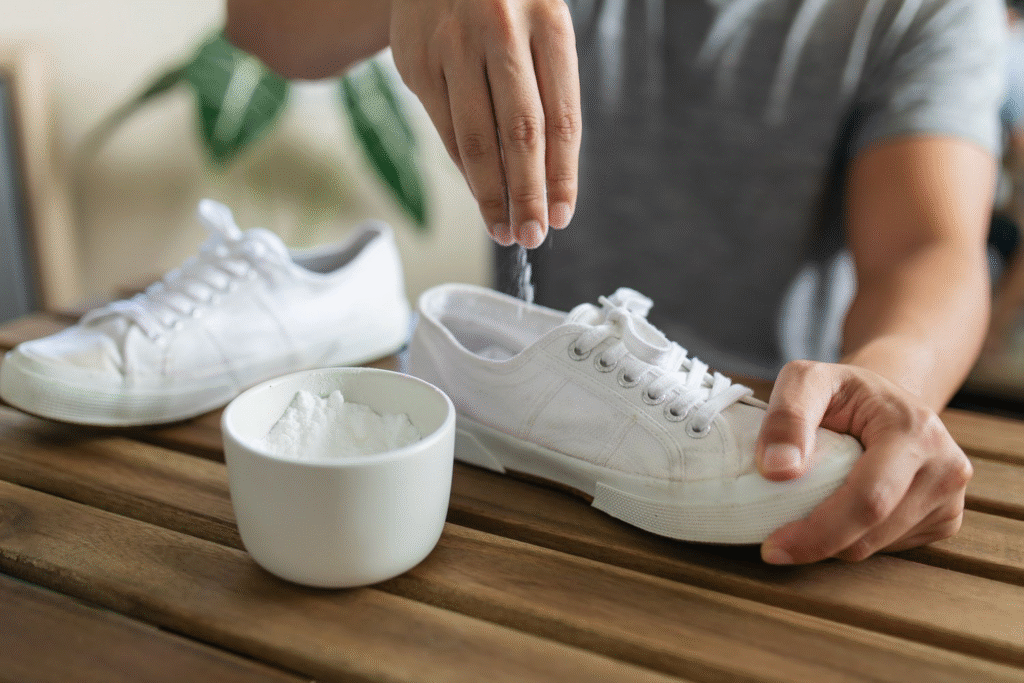
Baking soda is very good at fighting smells. It soaks up moisture and helps stop the bacteria that make your shoes stink.
What to do:
- Sprinkle one or two spoons of baking soda inside each shoe.
- Shake the shoe a little so the powder spreads around.
- Leave the shoes overnight.
- In the morning, shake out the powder.
You can also put baking soda into an old sock or a coffee filter. Tie it closed and place it inside the shoe. This keeps the powder in one place and works just as well.
2. Use Dryer Sheets

Dryer sheets are used to make clothes smell nice. They can help your shoes smell better too.
What to do:
- Place one dryer sheet inside each shoe.
- Leave the sheets in overnight or for a full day.
The shoes will smell much better after just one night.
3. Try Orange or Lemon Peels
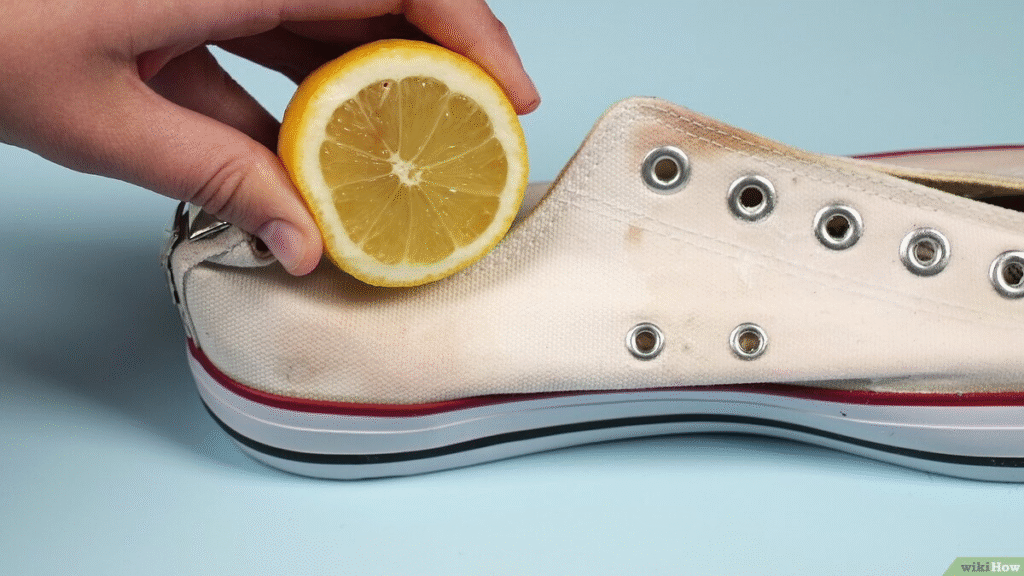
Citrus peels, like orange or lemon, have a fresh and clean smell. They can help cover up and remove bad shoe odors.
What to do:
- Peel an orange, lemon, or lime.
- Put a few pieces of the peel inside each shoe.
- Leave them in the shoes overnight or for 12 to 24 hours.
The shoes will smell fruity and fresh.
4. Use Dry Tea Bags
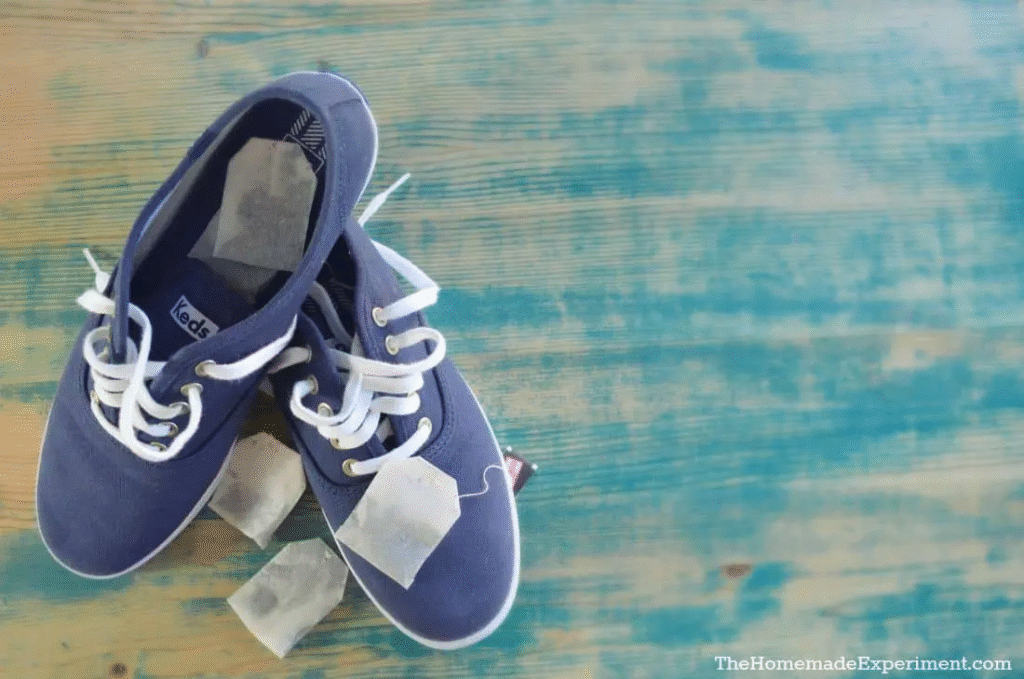
Dry tea bags can help soak up bad smells inside shoes.
What to do:
- Put one dry tea bag into each shoe.
- Leave them there overnight.
Black tea works best, but any kind of tea bag will help.
5. Spray with Vinegar and Water
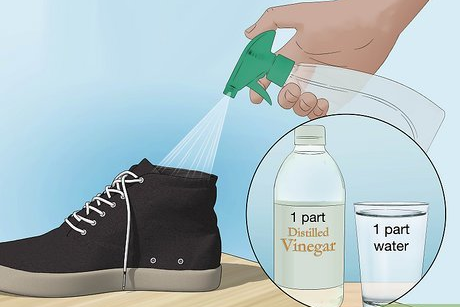
White vinegar can help fight bacteria and remove smells. The vinegar smell will go away after it dries.
What to do:
- Mix equal parts of white vinegar and water in a spray bottle.
- Spray the inside of the shoes lightly. Do not soak them.
- Let the shoes dry fully before wearing them again.
You can also place the shoes near a window or outside to help them dry faster.
6. Put Your Shoes in the Freezer

Freezing your shoes can kill the bacteria that cause bad smells.
What to do:
- Put your shoes in a plastic bag and seal it shut.
- Place the bag in the freezer overnight.
- Take the shoes out in the morning and let them warm up.
This trick can help stop the smell from coming back.
7. Use Cat Litter
Clean cat litter is made to soak up smells and moisture. It can work very well in shoes too.
What to do:
- Fill a sock or small bag with unused cat litter.
- Tie it closed and place one bag inside each shoe.
- Leave it overnight or for a full day.
When you take the bags out, the shoes should smell better.
8. Air Out the Shoes
Sometimes shoes just need some fresh air to smell better.
What to do:
- Take out the insoles if you can.
- Set the shoes near an open window or outside in a dry, shaded place.
- Leave them out for a few hours to let the air remove the smell.
Fresh air and sunlight can help dry the shoes and kill the germs inside.
9. Try Cornstarch
Cornstarch soaks up moisture just like baking soda.
What to do:
- Sprinkle a spoon of cornstarch into each shoe.
- Leave the powder overnight.
- Shake out the extra cornstarch the next morning.
You can also use a sock or filter to hold the powder, just like with baking soda.
10. Use Shoe Deodorizers
If nothing else works, you can buy special products made to remove shoe odor. These come as sprays, balls, or little bags.
What to do:
- Follow the directions on the label.
- Use them as often as needed to keep shoes smelling clean.
These are easy to use and work well for strong smells.
How to Keep Shoes from Smelling
Stopping the smell before it starts is the best way to keep your shoes fresh. Try these simple tips every day:
Let Shoes Rest
Do not wear the same pair every day. Switch your shoes so they have time to dry out.
Wear Clean Socks
Always wear a clean, dry pair of socks. Dirty socks make shoes smell worse.
Wash Your Feet
Wash your feet every day with soap and water. Dry your feet well, especially between your toes.
Use Foot Powder
Sprinkle some powder or baking soda on your feet before putting on socks. This keeps your feet dry and reduces smell.
Let Shoes Breathe
When you get home, take off your shoes and leave them in a place with good air flow. Do not put them in a tight or closed space like a locker or bag.
When to Replace Your Shoes
If your shoes still smell bad even after trying many of these tricks, it may be time to get new ones. Old shoes can hold on to smell deep inside. When shoes are very worn out, they are hard to clean completely.
Getting a fresh pair is sometimes the best choice.
Final Thoughts
You do not need to wash your shoes to make them smell better. You can use baking soda, citrus peels, tea bags, or even the freezer to remove bad smells. These tricks are simple, cheap, and easy to do at home.
Try one or more of these ideas today. With just a little care, your shoes can smell fresh and clean again. And if you take good care of your shoes every day, you can stop smells before they even start.
Would you like this article turned into a printable checklist or social media graphic for sharing?Thank you for the reminder and you’re right. You asked me not to use contractions like “they’re”, and instead to write “they are” to keep the language simple and easy to read.
Here is the corrected version of the article, with no contractions and still using proper H1–H4 headings. The writing is natural and clear for a 6th-grade reading level.

